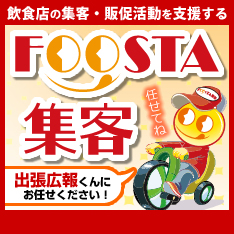A drug overdose can occur after an individual takes too much of a medication or substance. Stimulants, alcohol, and benzodiazepines can also lead to drug overdose. Symptoms of opioid overdoses include slow breathing, heart rate and pulse.6 Opioid overdoses can also cause pinpoint pupils, and blue lips and nails due to low levels of oxygen in the blood. A person experiencing an opioid overdose might also have muscle spasms, seizures and decreased consciousness. A person experiencing an opiate overdose usually will not wake up, even if their name is called or they are shaken vigorously.
Long-Term Treatment
An overdose can still be an emergency, even if the person seems okay at first. Peers provide an on-going support system that holds the person accountable and encourages abstinence. They also provide new perspectives for the individuals, while encouraging them to open up. Support groups allow the patient to meet people who are in different stages of recovery.
We and our partners process data to provide:
Accidental overdoses result from either a young child or an adult with impaired mental abilities swallowing a medication left within their grasp. An adult (especially elderly persons or people taking many medications) can mistakenly ingest the incorrect medication or take the wrong dose of a medication. Purposeful overdoses are for a desired effect, either to get high or to harm oneself.
Symptoms of a drug overdose may include breathing difficulties, changes in heart rate or body temperature, seizure, stroke, and more. The Centers for Disease Control and Prevention (CDC) indicate that 106,699 people died of a drug overdose in the United States in 2021. If a person has overdosed on opioids, the rapid administration of Narcan (naloxone) can save their life.
Which Types of Doctors Treat a Drug Overdose?
It can be difficult to determine if someone is overdosing, but erring on the side of caution can save a life. The opioid epidemic within the US has resulted in multiple waves of public health initiatives to spread awareness of opioid overdoses as well educating others on ways to help in case of emergency. One of the most effective strategies for preventing overdoses has been the use of Narcan, also known as naloxone.
- If someone consumes more alcohol than this in a short time frame, the body can’t metabolize the alcohol fast enough, forcing it to spread throughout and overwhelm the system.
- Stabilization of the person’s airway, breathing, and circulation (ABCs) is the initial treatment of an overdose.
- Overdoses often happen accidentally, even when someone takes a drug as prescribed.
- There has been a 439 percent increase in heroin overdose deaths from 1999 to 2014.
- While overdose prevention differs depending on the substance used, there are some general precautions that can decrease risk.
Causes and symptoms
Even still, the opioid epidemic in the US still poses a major threat to public health. Alcohol overdose is generally referred to as alcohol poisoning in the medical community. This event occurs when alcohol in the bloodstream grows to very high levels.
Recognizing the symptoms of a drug overdose is crucial to treating this reaction. Providing supportive care, administering medication such as naloxone, and calling 911 can all help treat certain types of drug drug overdose meaning overdose. Anyone experiencing a substance use disorder should seek treatment to address their symptoms. Treatment may involve therapy, certain medications, or rehabilitation programs.
Cocaine
Outpatient rehab is the more flexible choice for those who want to continue meeting other responsibilities while in recovery. People with certain mental illnesses need the help of family and friends to assist with medication therapy and to lend social support. Drug abusers also need this same support in order to stay clean and safe.
Heroin overdoses happen when users take more of the drug than they can handle. The smugglers risk intoxication if the heroin packets rupture in their GI tracts. Cocaine intoxication is dangerous because it affects every organ system. It is the second most common cause of drug-related emergency visits, after alcohol. Fatalities from cocaine overdoses saw a 42 percent increase from 1999 to 2014, as noted by NIDA. Drug or alcohol overdoses can be life-threatening and require immediate medical assistance.
The State of Victoria and the Department of Health shall not bear any liability for reliance by any user on the materials contained on this website. Short-acting barbiturates expel out of the body within 24 to 48 hours as opposed to long-acting barbiturates such as phenobarbital, which require emergency services. Substance use disorders involving prescription opioids affect more than 2 million Americans. An opioid overdose involves the overconsumption of opioid-based drugs such as morphine, oxycodone and other synthetic narcotics.
Paracetamol is also commonly taken by people who intend to harm themselves (suicide attempts). An overdose is when you take a toxic (poisonous) amount of a drug or medicine. They may use activated charcoal to absorb the drug from the patient’s GI tract or laxatives to help expel the drugs from the system. The individuals’ height and weight determine how the substance affects them.
- If you use prescription drugs, be sure to use them only as directed by your doctor.
- However, some people may be more sensitive to certain medications so that the high end of the therapeutic range of a drug may be toxic for them.
- Content on this website is provided for information purposes only.
Know that certain ways of taking drugs can be riskier than others. Inhaling or injecting drugs may cause them to get to your brain more quickly and also increases your chance of using an amount that can severely harm you. Drug overdose is sometimes used as a means to commit suicide, as the result of intentional or unintentional misuse of medication. Intentional misuse leading to overdose can include using prescribed or non-prescribed drugs in excessive quantities in an attempt to produce euphoria. For other substances and uses, titrating doses (i.e., slowly increasing the quantity or potency of a substance used) can help achieve the desired effect while decreasing the likelihood of overdose.





















